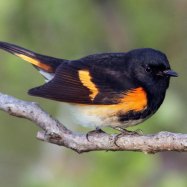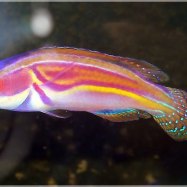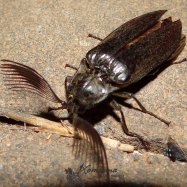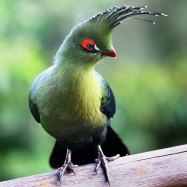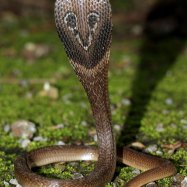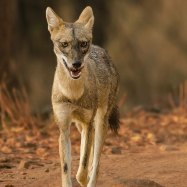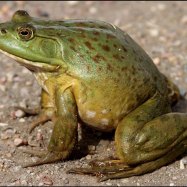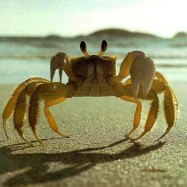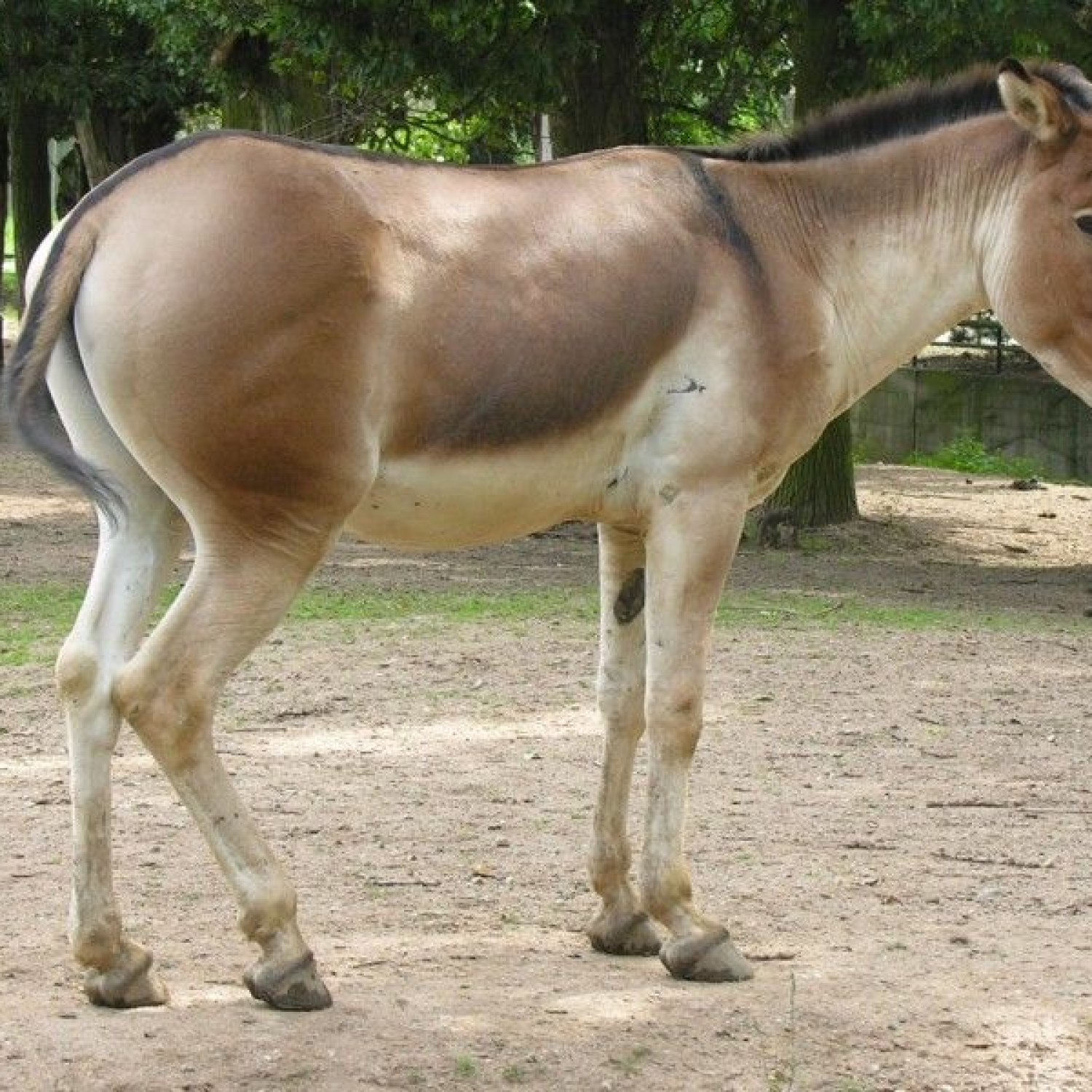
Kiang
2.5 to 3 meters
The Kiang, also known as the Tibetan Wild Ass, is a majestic animal found in high altitude regions. Belonging to the Equidae family, they can grow up to 3 meters in length and have a large, robust body shape. These animals are important for grazing and play a vital role in maintaining the balance of their ecosystem. #Kiang #TibetanWildAss #HighAltitudeAnimals #EquidaeFamily #EcosystemBalance
Animal Details Summary:
Common Name: Kiang
Kingdom: Animalia
Habitat: Grasslands, alpine meadows
Discovering the Untold Story of the Kiang, the Wild Equine of the Tibetan Plateau
In the vast, sprawling landscape of the Tibetan Plateau and its surrounding areas, lies a powerful and majestic animal – the Kiang. This creature, known for its robust build and brownish-grey coat, has captivated the hearts of many with its wild and untamed spirit. Yet, despite being a common sight in these high altitude regions, very little is known about the Kiang. Today, we will unravel the mysteries surrounding this magnificent wild equine and delve into the unique world of the Kiang Kiang.The Kiang's Taxonomic Classification
The scientific name of the Kiang is Equus kiang, with the genus Equus referring to the family of horses, donkeys, and zebras. The species name, kiang, comes from the Tibetan term "kyang" meaning "wild ass." The Kiang, therefore, belongs to the Equidae family, which comprises eight species of horses and equines.The kingdom for the Kiang is Animalia, placing it in the same category as all other animals. As a chordate, the Kiang belongs to the phylum Chordata, as it has a notochord (a flexible and hollow tube that runs along the length of its body), gill slits (present during development), and a dorsal hollow nerve cord.
The Kiang's Habitat and Distribution
The Kiang's preferred habitat is the vast and open grasslands, as well as alpine meadows. These regions are found in the Tibetan Plateau and the surrounding areas, such as China, India, and Nepal. Due to its ability to survive in high altitudes, the Kiang can be found in areas with elevations over 4,000 meters above sea level.The Kiang's habitat is characterized by harsh and extreme weather conditions, with temperatures dropping far below freezing in winter and rising to scorching levels in summer King Shepherd. Yet, these resilient creatures thrive in these conditions, making the Kiang a prime example of adaptation and survival.
The Kiang's Diet and Feeding Method
As with most equines, the Kiang is a herbivore, which means it primarily feeds on plants. In its natural habitat, the Kiang feeds on grasses, herbs, and shrubs. Due to the lack of vegetation at such high altitudes, the Kiang is also known to eat lichen, a type of fungi that grows on rocks and trees.To search for food, the Kiang utilizes its long, sturdy legs to cover significant distances. As a grazing animal, it lowers its head to graze, using its strong teeth to chew and break down the tough vegetation. The Kiang's selective feeding habits also play a crucial role in maintaining the balance of the grassland ecosystem.
The Physical Characteristics of the Kiang
One of the most distinct features of the Kiang is its brownish-grey coat, which allows it to blend in with its surroundings, making it harder for predators to spot. This coat also serves as insulation against the extreme temperatures, providing warmth in the cold winter months and reflecting heat in the summer.In terms of body shape, the Kiang is large and robust, standing at an average height of 1.2 meters at the shoulder and measuring 2.5 to 3 meters in length. Its weight ranges from 400 to 500 kilograms, making it one of the largest and heaviest wild equines.
The Kiang also has a distinctive short, erect mane and a tail with a black tuft at the end. Its legs are long and sturdy, enabling it to move quickly in its mountainous habitat. These features, combined with its powerful build, make the Kiang a strong and agile animal.
The Kiang's Behavior and Social Structure
The Kiang is considered a highly gregarious animal, living in large herds that can range from a few individuals to hundreds of them. These herds are further divided into smaller groups, each consisting of a few females and their young. Adult males will typically roam alone or in bachelor groups.Being highly adapted to life in the harsh conditions of the Tibetan Plateau, the Kiang is an extremely agile and quick animal. They are known for their amazing speed, which can reach up to 60 kilometers per hour. They are also powerful climbers, able to navigate steep and rocky terrain with ease.
Despite its tough exterior, the Kiang is a peace-loving animal. It is known to settle disputes among its herd members peacefully, and aggressive behavior is rarely seen. However, during the mating season, males may engage in battles to establish dominance and secure a mate.
The Kiang's Threats and Conservation Status
As with many wild animals, the Kiang is facing several threats in its natural habitat. One of the main reasons for its declining population is poaching, as its meat is considered a delicacy in Tibet. Climate change is also a significant concern, as it affects the availability of vegetation on which the Kiang depends for its survival. Infrastructure development, such as road construction, also poses a threat to the Kiang's habitat.The IUCN Red List categorizes the Kiang as "Near Threatened," which means the species is at a high risk of extinction in the wild. To protect and conserve the Kiang and its habitat, several conservation efforts have been implemented, including stricter poaching regulations and habitat restoration projects.
The Kiang and Its Importance in Tibetan Culture
The Kiang has been an integral part of Tibetan culture for centuries. It is often referred to as the "Tibetan horse" or the "jungle camel," and is considered a symbol of strength, endurance, and freedom. In some areas, the Kiang is also seen as a manifestation of the deity Lung Ta, who is believed to bring good luck and prosperity.For the nomadic communities living in the Tibetan Plateau, the Kiang is of immense importance as a source of food, transportation, and material for their traditional clothing and homes. These communities have a deep respect and connection with the Kiang, and many traditional rituals and ceremonies are centered around the animal.
The Kiang and Its Role in the Ecosystem
The Kiang is a keystone species, meaning it plays a crucial role in the functioning of its ecosystem. As grazers, they play an important role in shaping the vegetation in their habitat. They help prevent the overgrowth of grasses and shrubs, creating a more diverse ecosystem suitable for other species.The Kiang's dung and urine also provide nutrients for the soil, promoting plant growth and supporting the lives of smaller organisms in the ecosystem. Furthermore, their grazing patterns also help disperse seeds, contributing to the spread of plant life in the region.
In Conclusion
The Kiang is more than just a wild equine roaming the vast grasslands of the Tibetan Plateau. It is a symbol of resilience, adaptation, and interconnectedness with its ecosystem and the people who call this region home. As we continue to learn more about this fascinating creature, let us also strive to protect and preserve its habitat and way of life for generations to come.

Kiang
Animal Details Kiang - Scientific Name: Equus kiang
- Category: Animals K
- Scientific Name: Equus kiang
- Common Name: Kiang
- Kingdom: Animalia
- Phylum: Chordata
- Class: Mammalia
- Order: Perissodactyla
- Family: Equidae
- Habitat: Grasslands, alpine meadows
- Feeding Method: Herbivore
- Geographical Distribution: Tibetan Plateau and surrounding areas
- Country of Origin: China, India, Nepal
- Location: High altitude regions
- Animal Coloration: Brownish-grey
- Body Shape: Large and robust
- Length: 2.5 to 3 meters
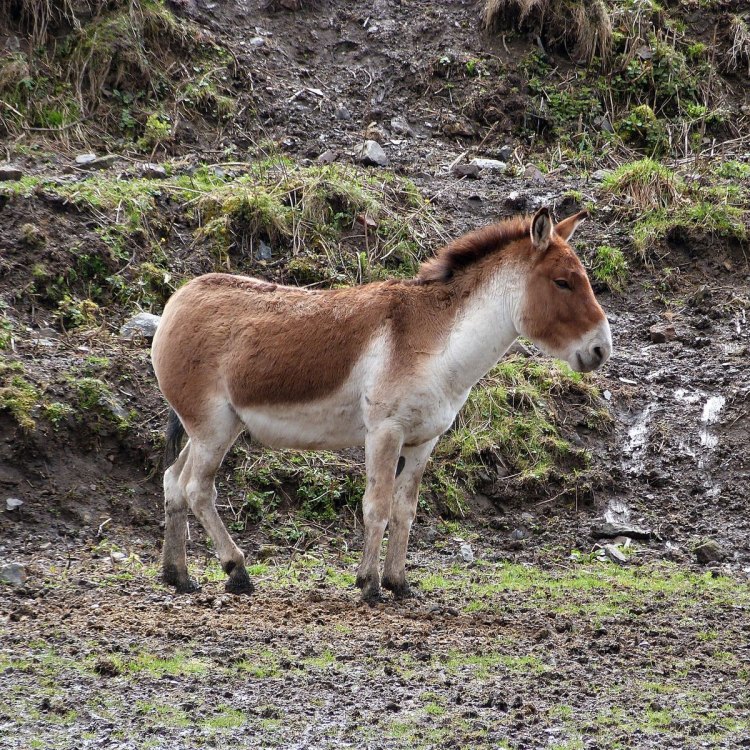
Kiang
- Adult Size: Shoulder height up to 1.5 meters
- Average Lifespan: 10 to 15 years
- Reproduction: Sexual
- Reproductive Behavior: Polygamous
- Sound or Call: Loud whinnying
- Migration Pattern: Seasonal migration
- Social Groups: Herd
- Behavior: Diurnal, highly social
- Threats: Habitat loss, poaching
- Conservation Status: Near Threatened
- Impact on Ecosystem: Key grazers, help maintain grassland ecosystem
- Human Use: Traditional medicine, tourism
- Distinctive Features: Large size, long mane, dark stripe along the back
- Interesting Facts: Kiangs are the largest of all wild asses and can travel long distances in search of food and water.
- Predator: Snow leopards, wolves
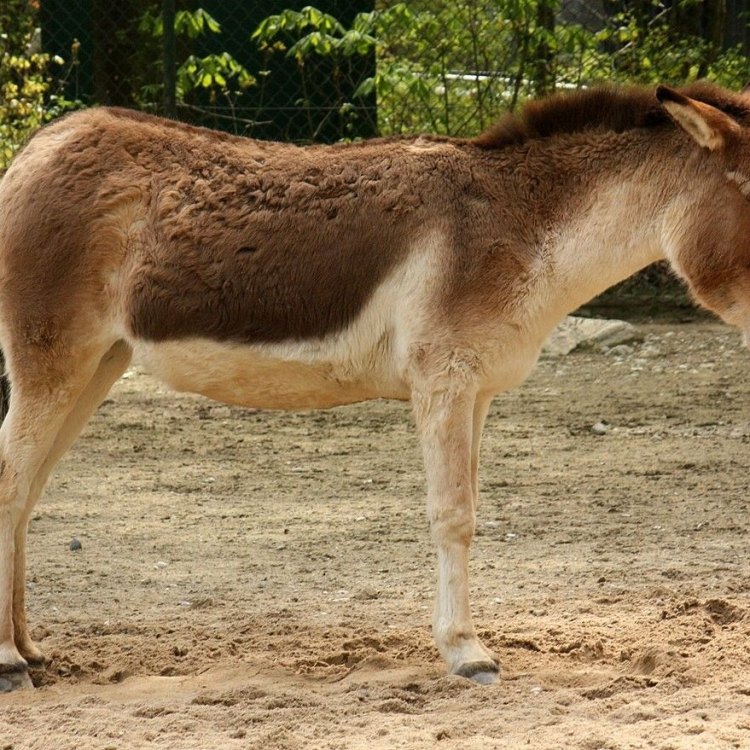
Equus kiang
The Magnificent Kiang: Defenders of the Grasslands
In the vast and rugged mountains of the Tibetan Plateau, there roams a majestic creature that is revered and feared by the locals – the Kiang. This stunning wild ass is one of the most distinct and important species in the region, playing a crucial role in maintaining the delicate balance of the grassland ecosystem. From their impressive size and unique features to their fascinating behaviors and threats faced, the Kiangs have captured the attention and interest of wildlife enthusiasts around the world. Let us delve deeper into the world of the Kiang and discover what makes them truly exceptional PeaceOfAnimals.Com.Adult Size:
Standing almost 1.5 meters tall at the shoulder, the Kiang is the largest of all wild asses. With their long, slender legs and muscular body, they are perfectly adapted to traversing the rough terrain of their mountainous habitat. Their large size also makes them an easy target for predators such as snow leopards and wolves, which makes their survival even more impressive.
Average Lifespan:
Kiangs have a relatively short lifespan of 10 to 15 years in the wild. However, they have been known to live up to 20 years in captivity. This, coupled with their low reproductive rate, makes them vulnerable to population decline.
Reproduction:
Like most mammals, Kiangs reproduce sexually. Female Kiangs reach sexual maturity at 2 to 3 years old, while males reach it at 3 to 4 years old Kaluga Sturgeon. They have a gestation period of 12 months and give birth to a single foal. The foals are weaned at 10 to 12 months old and reach adulthood at around 2 to 3 years old.
Reproductive Behavior:
Kiangs are polygamous, meaning they have multiple sexual partners. During the breeding season, males compete for the attention of females by displaying their strength and dominance through loud calls and aggressive behaviors. This behavior is crucial in maintaining the genetic diversity of the species and ensuring the survival of the next generation.
Sound or Call:
The Kiangs' loud whinnying call can be heard from miles away. This sound serves as a form of communication between individuals in their highly social herd. It also serves as a warning signal for potential predators, alerting the herd to danger.
Migration Pattern:
Kiangs are known to undertake seasonal migrations in search of food and water. During the harsh winter months, they descend to lower altitudes, where the climate is milder, and food is more abundant. In the summer, they return to their higher grazing grounds.
Social Groups:
Kiangs are social animals and live in herds led by a dominant male. The herds can consist of up to 100 individuals, but they usually break into smaller groups for foraging and social interactions. The close-knit social structure of Kiangs is essential in ensuring the survival of the species, as they rely on each other for protection and information.
Behavior:
Kiangs are diurnal animals, meaning they are active during the day. They spend most of their time grazing on the tough grasses that grow in their high-altitude habitat. Kiangs are highly adaptable, and their behavior varies depending on the season and the availability of resources.
Threats:
As with many animal species, the Kiangs face a myriad of threats to their survival. The most significant threat comes from habitat loss due to human activities such as mining, agriculture, and infrastructure development. Their large size and low reproductive rate also make them easy targets for poachers, who hunt them for their meat and body parts, which are used in traditional medicine.
Conservation Status:
Due to these threats, the Kiangs are classified as Near Threatened on the IUCN Red List of Threatened Species. However, there is still hope for their conservation, as organizations and governments are working towards protecting their habitat and implementing stricter laws against poaching.
Impact on Ecosystem:
Kiangs may be seen as the guardians of the grasslands, as their grazing habits have a significant impact on the ecosystem. They help maintain the grassland habitat through their selective grazing, which prevents any one plant species from dominating the landscape. This ensures that there is a diverse range of plant life for other animals to thrive on.
Human Use:
Kiangs have also been a part of traditional Tibetan medicine for centuries. Their bones, hair, and body parts are believed to have healing properties and are used in various remedies. However, due to their dwindling population, it is crucial to find more sustainable alternatives to protect the species.
Distinctive Features:
Aside from their large size, Kiangs have several distinctive features that set them apart from other wild asses. They have a long, dark mane that runs along their neck and back, giving them a regal and majestic appearance. They also have a striking dark stripe along their back, which makes them easily recognizable.
Interesting Facts:
Kiangs are incredible long-distance travelers and have been recorded traveling up to 20 kilometers in one day in search of food and water. They are also excellent swimmers and have been seen crossing lakes and rivers to reach their migration destinations. These facts highlight the resilience and adaptability of these magnificent creatures.
Predators:
Kiangs may be large and powerful, but they are not immune to predators. Snow leopards and wolves are their primary natural predators, but they have also been hunted by humans for their meat and body parts. However, in recent years, efforts have been made to protect them from these threats, which have positively impacted their population growth.
In conclusion, the Kiangs are a truly remarkable species that play a vital role in the ecosystem of the Tibetan Plateau. From their impressive physical features to their fascinating behaviors, they have captured the attention and admiration of those who encounter them. However, their survival is currently threatened, so it is crucial to raise awareness about their importance and take action to protect them. These magnificent creatures must be allowed to roam freely and continue their critical role in maintaining the balance of the grassland ecosystem. Let us all work together to ensure that the Kiangs live on for future generations to marvel at.
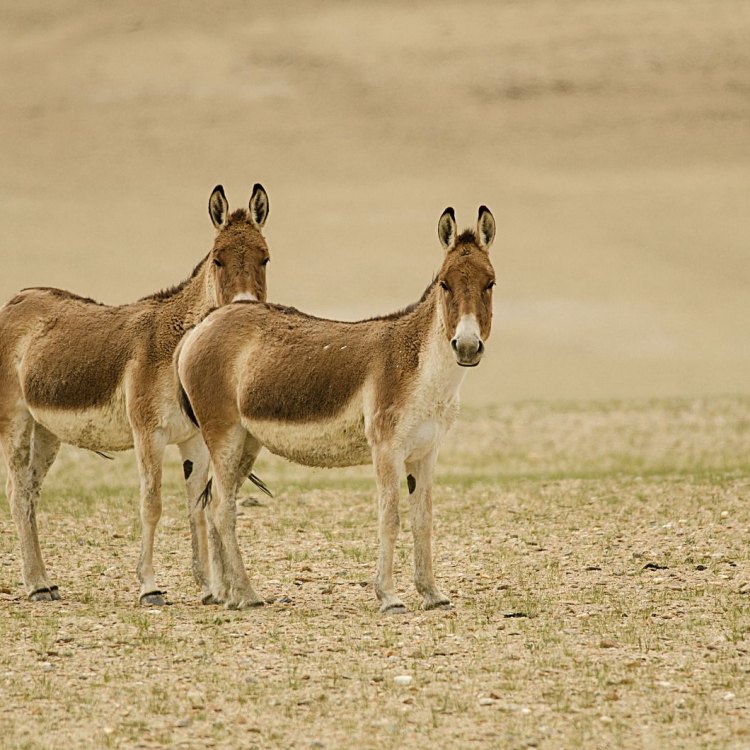
Discovering the Untold Story of the Kiang, the Wild Equine of the Tibetan Plateau
Disclaimer: The content provided is for informational purposes only. We cannot guarantee the accuracy of the information on this page 100%. All information provided here may change without prior notice.

